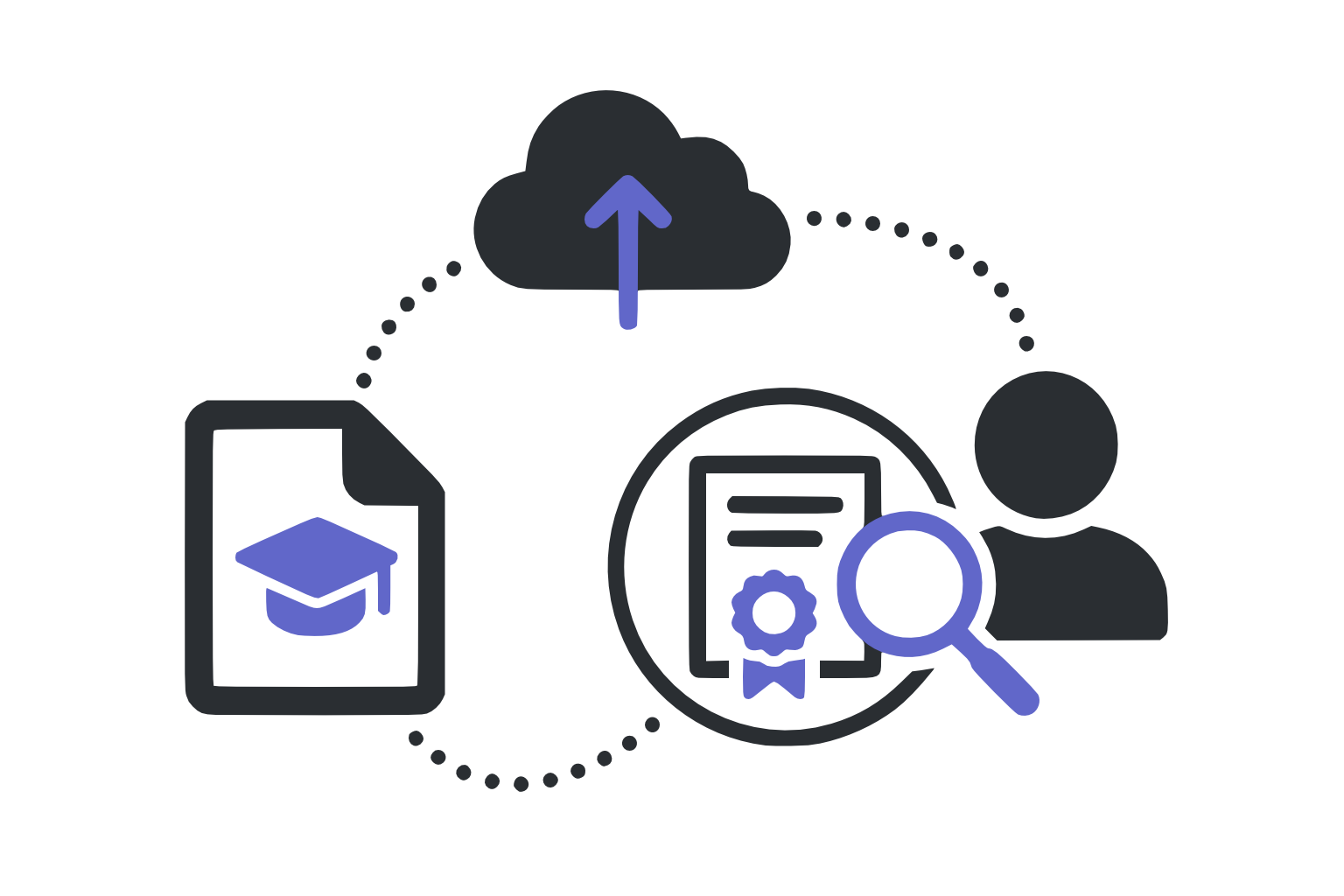by Sol Nasisi
Share
by Sol Nasisi

In an era defined by deepfakes, misinformation, and manipulated data, trust is becoming one of society’s most valuable—and most vulnerable—commodities. The explosion of generative AI, while powerful and transformative, has further blurred the lines between truth and fabrication. As a result, individuals and institutions alike are facing an unprecedented crisis of credibility. Amid this landscape, blockchain-backed digital credentials are emerging as a powerful defense, offering a verifiable, tamper-proof way to certify truth, counter fraud, and restore public trust.
The Crisis of Misinformation
Misinformation is no longer just the realm of fringe conspiracy theorists or viral social media posts. It has seeped into job applications, academic records, journalistic content, and even government data. A 2023 study by ResumeBuilder found that 32% of job seekers admitted to lying on their resumes, with many exaggerating degrees or certifications. Meanwhile, AI-generated academic papers and falsified credentials are slipping through traditional verification processes, undermining the value of legitimate qualifications.
The consequences are serious. When someone fakes a medical degree, falsifies a financial audit, or lies about academic credentials, it isn’t just dishonest—it’s dangerous. Institutions must now grapple with how to distinguish real from fake in a world where forgery is frictionless.
What Are Blockchain-Backed Digital Credentials?
Blockchain-backed digital credentials use decentralized, tamper-evident ledgers to issue and verify records. Each credential—a diploma, certificate, transcript, license, or ID—is cryptographically signed by the issuing institution and stored on a blockchain. Once recorded, it cannot be altered or deleted without detection.
This differs sharply from PDFs or images of credentials, which can be easily modified using basic software. Instead, blockchain credentials offer instant, independent verification. Anyone—an employer, school, or government agency—can confirm the authenticity of a credential with a single click, without needing to contact the issuer or trust a third-party database.
How They Help Fight Fraud and Lies
Blockchain credentials directly address the root causes of fraud: opacity, inefficiency, and trust gaps.
-
They eliminate forgery. A blockchain credential can’t be duplicated or modified without leaving a visible trace. For example, if a job candidate tries to alter a digital diploma, the hash (a unique digital fingerprint) stored on the blockchain will no longer match the original.
-
They enable instant verification. Hiring managers, schools, and licensing bodies can instantly confirm that a credential was issued by a legitimate authority, when it was issued, and whether it has been revoked. This reduces the time, cost, and uncertainty of manual background checks.
-
They put control in the hands of individuals. Credential holders can manage and share their verified records without having to rely on intermediaries, email chains, or outdated systems.
Preserving Truth in the Age of AI
The rise of generative AI has made it easy to produce fake images, audio, video, and text at scale. A convincing fake resume, a phony scholarly paper, or a made-up professional profile can be generated in minutes. In response, blockchain credentials serve as a counter-AI authenticity layer.
Take, for example, LinkedIn profiles. As AI-generated job histories and credentials become more common, platforms will need a way to flag which profiles are backed by verified achievements. Blockchain-backed badges and certifications could show which qualifications are legitimate and which are AI fabrications.
In journalism, where AI can fabricate entire news stories, blockchain credentials can be used to timestamp and authenticate the authorship and publication history of articles. The New York Times, Adobe, and other media organizations are already exploring “content provenance” technologies that use blockchain to preserve the integrity of visual and written content.
Educational institutions, meanwhile, are under pressure to ensure that diplomas and course completions are not faked using AI. Schools from MIT to the University of Bologna are experimenting with blockchain diplomas that graduates can share securely with employers—resistant to both tampering and obsolescence.
Real-World Examples
-
The Republic of Malta launched a nationwide blockchain credentialing system for education, making it one of the first countries to give every student a verifiable digital transcript and diploma.
-
IBM and Learning Machine (now Hyland Credentials) worked with MIT to pilot blockchain diplomas, allowing students to hold cryptographically secure versions of their degrees.
-
The World Health Organization and other global bodies used blockchain-based vaccination credentials during the COVID-19 pandemic to verify health status and prevent fraud in border control and travel.
Building a Trust Infrastructure
As society becomes more digitized—and more easily manipulated—the need for a trust infrastructure grows. Blockchain-backed credentials represent a building block of that infrastructure. They can’t fix misinformation overnight, but they can provide the foundation for a more secure and verifiable digital world.
In the long run, imagine a future where every important claim—whether about a person’s education, professional experience, authorship, or public statement—is anchored in a blockchain ledger. In this future, truth is not just a matter of trust, but of proof.
Conclusion
Blockchain-backed digital credentials offer a powerful response to the credibility crisis of our time. By enabling instant, tamper-proof verification, they help combat fraud, prevent misinformation, and protect the value of truth in the age of AI. As we move deeper into an era where trust is both indispensable and elusive, these credentials won’t just be a technical upgrade—they’ll be a societal necessity.
